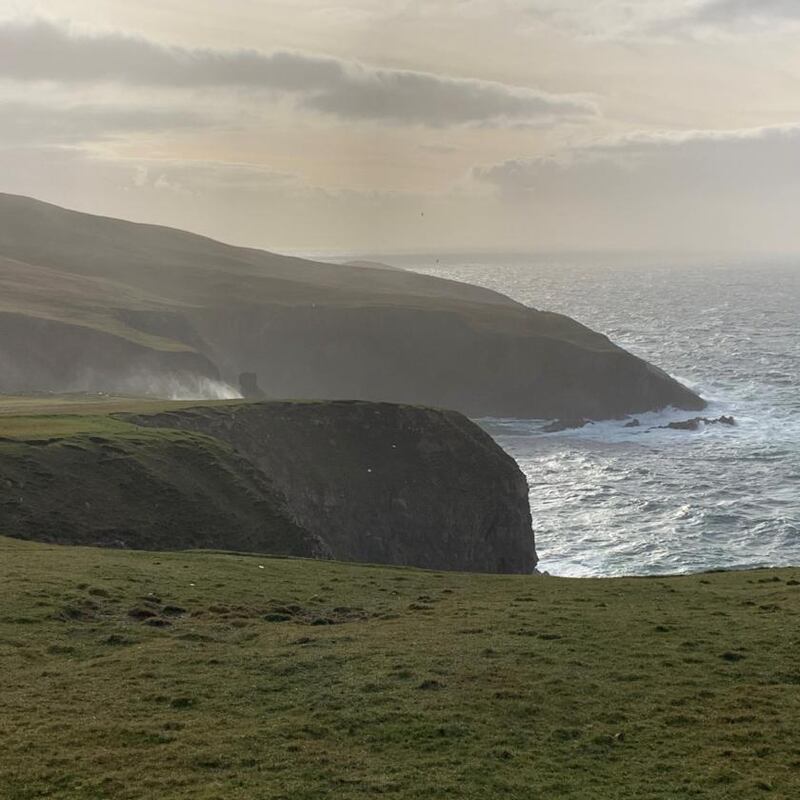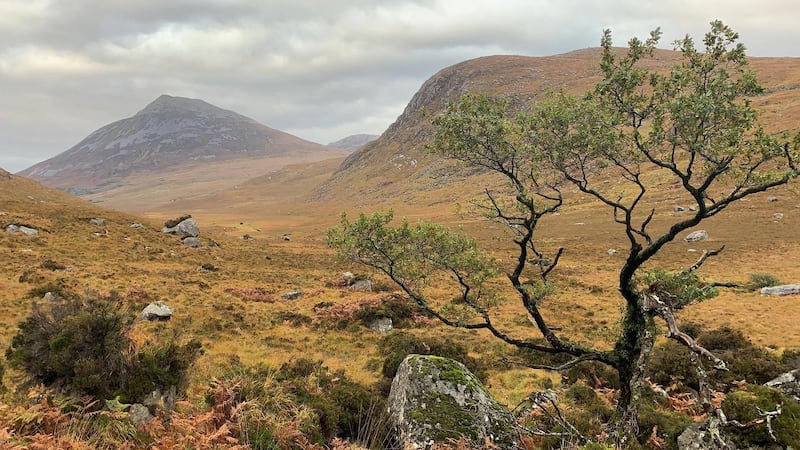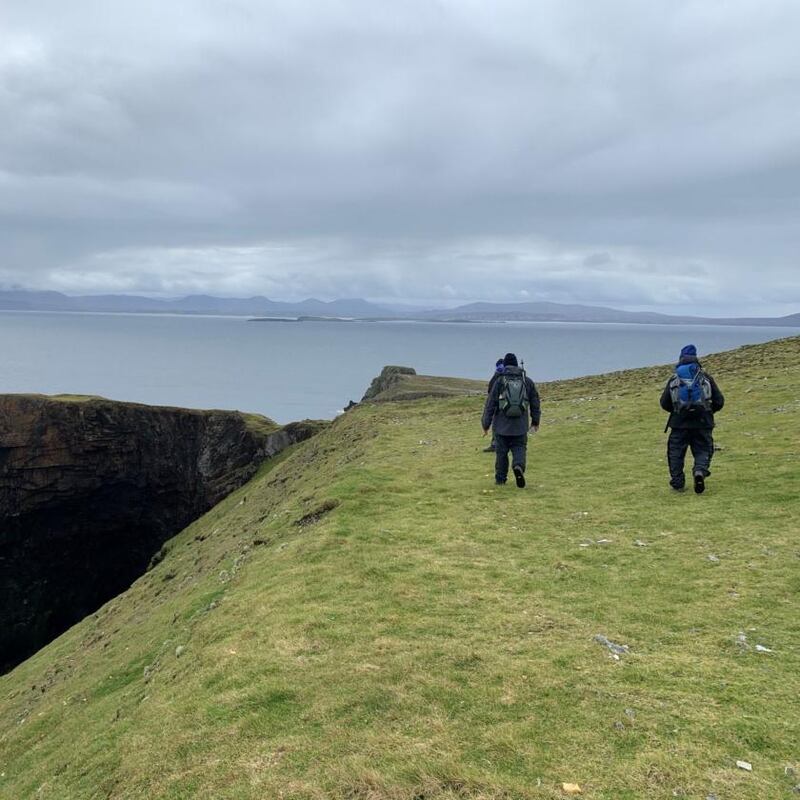The west coast of Ireland in winter is in many ways a different land, a land more open to the elements which shaped its landscape and people, sculpting its beauty over countless millennia. It is a land which has learned to be at home with those elements, and their changing moods. That said, the most beautiful beaches in the world are all still there, a little wilder now with seas of whites and greys and often milky winter blues; the hillsides and mountains are all still there too, now clothed in soft pastels of wind-brushed browns and yellows below high craggy greys of quartzite and granite. Perhaps best of all are the pubs, guest houses and hotels. Their welcome is warmed by wood fires, cosy corners and hot local chowders.
All this we discovered on a five-day visit to north-west Donegal in November, basing ourselves in friendly and comfortable Óstán Loch Altan in the proudly Gaeltacht town of Gort a' Choirce or Gortahork. On some of our days, the hills were misty and mysterious, with that great quartzite sentinel of Donegal, Errigal, shredding storm clouds and brushing off raking winds as it has been doing almost forever. On those days we passed up on the hills and took ourselves to Tory Island on the day the weather allowed the ferry to sail; and to Arranmore on the inevitable one stormy day, the very robust all-weather vessel, the "Morvern" taking us comfortably there where we walked the Slí Arainn Mhóir out to the lighthouse and lingered there, enthralled by the ferocity of wind and sea.

And on two of the days when the sky stopped to take a breath, we took to the hills of achingly beautiful Derryveagh, a Winter sun and warm colours enticing us to explore these challenging hills. Those walks were tough, underfoot conditions neither dry nor ever level, and we were glad of the hot showers and good food at the hotel. The equally excellent food in Teach Bhillie across the road was all great value compared to Dublin prices.
As always, the island trips are special. Our north-western islands are seemingly imbued with romance and myth. They are places where the stories are fresh and colourful and where, in their telling, ancient battles and dramatic confrontations between "Pagans" and Christian Holy Men and Women are as if of yesterday. Nowhere is that more true than on Oileán Thoraí, or Tory Island, the wildest and most remote of our inhabited islands.
Our visit there was enriched beyond measure by our guide for the day, a permanent resident of East Town at, yea, the eastern end of the island.
"Ye don't look like the kind of lads that'd be throwing back a load of drink", our guide says to us on the pier in Tory's West Town, seeming to suggest as he glanced skywards (and sideways at our gear) that we wouldn't be given to abandoning his tour, and running to the pub in the event of a drop of rain. And so, satisfied on that score, he said we'd start with the "Pagan" eastern side of the island and work our way forward through time to the arrival of Saint Colmcille in the sixth century AD, in what is now the Capital of the island, West Town or An Baile Thiar. And as he walked and talked, we began to know a man who loved and respected his island, its culture, wildlife and stories.

As we went, our guide enthralled us with a mix of story, myth, news, folklore, gossip and history, succeeding in not distinguishing greatly between one and the other. Our only regret, and indeed his too, was that that “flow” could not be as gaeilge and had to be in a language largely un-practiced by him up to age 12.
We walked the north shore of the island and into the drama of its eastern end, Dún Bhaloir, a different world of “wishing stones”, precipitous drops, sea caves and sea arches, with the shattered sea arête of An Tor Mór stopping us in our tracks. We heard story after story about every tor, sea stack, bay and blow-hole. He was funny and informative, switching from yarn to fact with the faintest of smirks and glint of eye.
Indeed his fellow island resident, Balor of the Evil Eye, King of the Fomorians, seemed to him much more fun than Columcille, and his stories of the former allowed full rein to his storytelling skills in our walk over and through Dún Bhaloir. It was there that Balor had his stronghold, and where he imprisoned his daughter Eithne, protecting her from any male attention in an unsuccessful attempt to thwart the prophecy that a grandson of his would ultimately face down that evil eye. Mythology blended into archaeology in the aura of this strange place, with physical signatures of old Iron Age dwellings and ramparts giving some credence to the stories we listened to, sometimes huddled in the wind around our guide.

We had a lovely lunch of tea and sandwiches in the “Club” just to the west of An Baile Thiar and heard more stories about Columcille, Bridhe, the Clock Tower, the Tau Cross, basking sharks, killer whales, rat-repelling magic ground, strange burial happenings, “water men” raiding for poitín, rescues and tragedies.
Our heads spinning, but thrilled that we came, we got the “Queen of Aran” back to Magheraroarty at 3.30pm. On the last day of our trip, the weather closed in again and our plan to climb Errigal on our way home was abandoned. This we did not regret, having loved our winter visit to the places and people of that most storied and beautiful corner of Ireland.

















